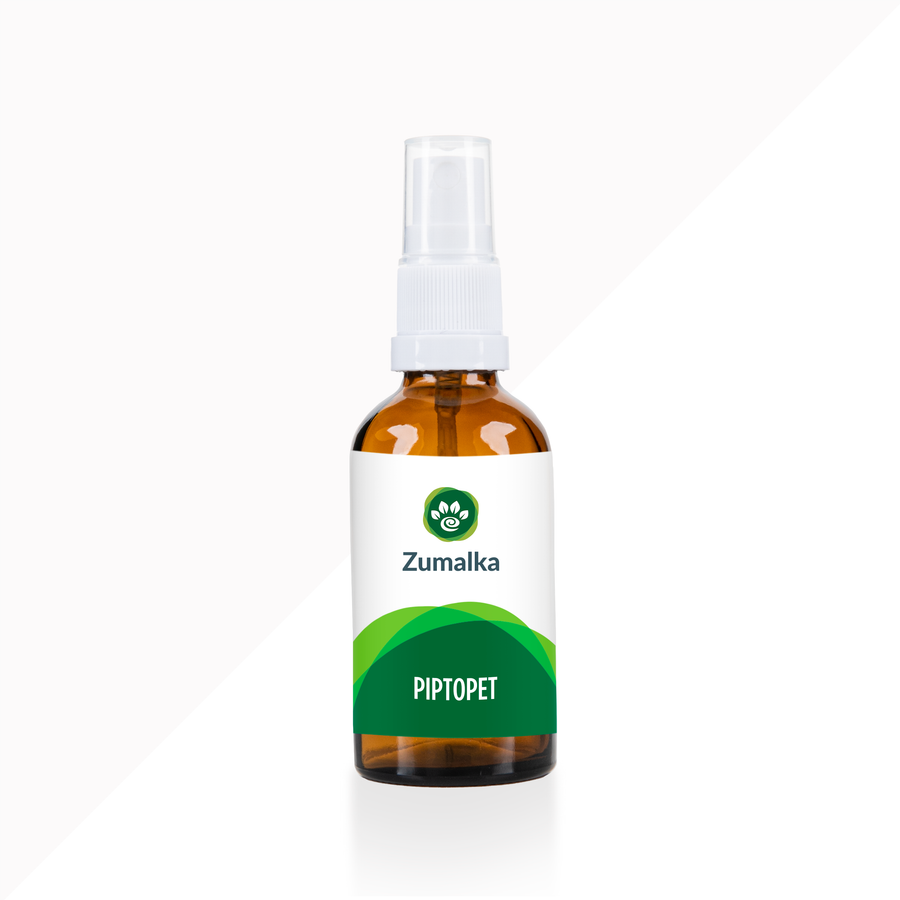Feline Leukemia Causes, Symptoms, and Vet-Verified Treatments
List of Contents

When we say feline leukemia, we can refer to the malignant bone marrow and blood disease (cancer) that leads to an overproduction of abnormal white blood cells that can be life-threatening to the cat, or to the feline leukemia virus (FeLV) that can trigger the development of certain types of cancer. Therefore, feline leukemia can develop as a result of FeLV infection or independently of it (in rare cases).
It has a great impact on the immune system and the general health of the cat. This happens because it disrupts the normal production of blood cells, making affected cats more susceptible to infections, anemia, and other complications. Clinical signs can include pale mucous membranes, enlarged lymph nodes, weakness, lethargy, and fever. Early detection of feline leukemia is essential to improve the well-being of the affected cat.
In this article, you will learn what feline leukemia is, what its causes are, what the diagnosis and treatment are, and much more.
What Is Feline Leukemia?
Feline leukemia can refer to FeLV or chronic lymphocytic leukemia (CLL), a form of blood cancer. Most often, veterinarians use “feline leukemia” for the feline leukemia virus that can lead to leukemia.
FeLV is a contagious retrovirus that suppresses the immune system and can lead to various secondary diseases, including lymphoma and leukemia. The feline leukemia virus is part of the same virus family as the feline immunodeficiency virus (FIV). It is one of the most common causes of mortality in cats. Dogs are not affected by this virus.
On the other hand, chronic lymphocytic leukemia (CLL) is a type of cancer that originates in the bone marrow and results in the overproduction of abnormal lymphocytes (a type of white blood cell). CLL can affect both cats and dogs.
While FeLV can sometimes be the primary cause of chronic lymphocytic leukemia or other blood cancers, CLL can also occur independently.
Understanding the difference and relationship between the viral and cancerous forms of feline leukemia is essential for accurate diagnosis and treatment.
Feline Leukemia Causes and Transmission
FeLV is most often the main cause of leukemia in cats. Therefore, true CLL leukemia (FeLV-free) is very rare in this species.
Chronic Lymphocytic Leukemia Causes
The exact causes of CLL in cats are not fully understood, as it is a relatively rare type of cancer. However, there are several factors that can contribute to its development, such as:
- Genetic mutations – like most types of cancer, CLL is associated with genetic mutations that affect lymphocyte production and lead to uncontrolled proliferation and accumulation of abnormal lymphocytes in the bone marrow and blood.
- Age – older cats are more affected by this type of cancer.
- Viral infections – in some rare cases, FeLV may be responsible. Most cats with CLL are negative for feline leukemia virus.
- Environmental factors – exposure to certain toxins or carcinogens could potentially increase the risk of leukemia, similar to patterns seen in other species.
Feline Leukemia Virus Causes and Transmission
The feline leukemia virus is transmitted from a sick cat to a healthy one through:
- Saliva and nasal secretions (through grooming and shared food or water bowls)
- Urine and feces
- Blood – bites from infected cats (especially in outdoor/stray populations) – most common
- From mother to kitten (in utero or through milk)
Cats that live indoors and do not come into contact with sick cats are at very low risk of infection. Cats that have access to the outdoors, are unneutered (males), and engage in mating and territorial fights are at higher risk. Cats that suffer from various chronic conditions, like respiratory disease, mouth diseases (stomatitis), and abscesses, are also at higher risk. If you have two cats in the same house that share the same food and water bowls and litter boxes, and one is a carrier of FeLV and the other is not, the healthy cat will become sick because it will come into contact with the saliva, urine, and feces of the sick cat. In addition, mutual grooming is another mode of transmission.
However, for a cat to become infected with FeLV, repeated and prolonged exposure to the virus is required. It is believed that the major source of infection is transmission from a mother to her kittens.
Kittens are at greatest risk of infection because they do not have a developed immune system. On the other hand, adult cats may have some protection. However, cats of any age can become infected with feline leukemia virus.
In addition to leukemia, cats infected with FeLV can develop the following:
- Lymphoma
- Anemia
- Immune-mediated disease (when the immune system attacks its own cells)
- Immune suppression (which increases the risk of infections)
- Intestinal inflammation
- Neurologic disorders
- Mouth infections (stomatitis)
- Reproductive problems such as fetal resorption, abortion, neonatal death, and fading kitten syndrome(kittens usually die suddenly or pass away within a few days after birth).
The presence of other infections in the body, such as those caused by calicivirus or panleukopenia, can worsen these disorders generated by FeLV.
Feline Leukemia Clinical Signs and Symptoms

Whether we are talking about CLL or FeLV, in both situations, a sick cat will not show specific signs of the disease. As a result, when a cat suffers from CLL they may show the following clinical signs:
- Low appetite
- Weight loss
- Increased thirst
- Excessive urination
- Lethargy
- Bruising
- Enlargement of peripheral lymph nodes
- Pale mucous membranes
If a cat is infected with FeLV, three main forms of the disease can occur:
- A severe form that significantly affects the cat's immune system, making them vulnerable to other infections.
- An oncological form that favors the development of cancer (such as lymphoma or leukemia) and other uncontrolled proliferation of tissues. It usually requires chemotherapy or surgical treatments.
- A milder form that mainly manifests itself through anemia but can be easily managed.
Although some cats may remain asymptomatic, FeLV infection is frequently associated with the following clinical signs:
- Diarrhea
- Neurological signs (in later stages)
- Fever
- Swollen lymph nodes
- Pale (anemia) or yellow (jaundice) mucous membranes
- Unkempt appearance of the coat
- Oral, respiratory, skin, urinary, or intestinal persistent infections
- Difficult breathing
- Loss of appetite
- Weight loss
- Lethargy
Monitoring for Secondary Infections
As mentioned earlier, FeLV weakens the cat’s immune system. As a result, cats are more prone to secondary bacterial, viral, or fungal infections because their immune system is no longer able to fight back strongly to protect the body. Here’s how you can monitor your cat for secondary infections:
- Take your cat for regular checkups at the vet. Checkups should be done every six months or more often if clinical signs of illness appear. Your vet will perform routine blood tests (CBC and complete biochemistry) to detect early signs of anemia or other dysfunctions.
- Watch for clinical signs. If your cat has a secondary infection, you may notice the following: sneezing, coughing, nasal discharge, gastrointestinal upset, skin lesions (redness or itching), lethargy, decreased appetite, or fever. If these clinical signs occur, it is essential to contact your veterinarian as soon as possible because even minor infections can become severe in FeLV-positive cats.
Feline Leukemia Diagnosis
Chronic Lymphocytic Leukemia Diagnosis
In the case of chronic lymphocytic leukemia, the disease is diagnosed incidentally because most cats are asymptomatic. The diagnosis consists of blood cytology and a complete blood count (CBC). The cytological examination may show small, well-differentiated, mature lymphocytes. The hematology examination (CBC) may show a high white blood cell (WBC) count, specifically an increased number of lymphocytes (also known as lymphocytosis), possible anemia, and low platelets (thrombocytopenia) in advanced stages.
Additionally, for a more detailed picture of the affected cat's lymphocyte production, the veterinarian may recommend a bone marrow biopsy.
Also, to see how your cat's other organs are functioning or to rule out other conditions that may lead to an increased number of lymphocytes, your veterinarian may recommend a complete blood biochemical profile and urinalysis.
Feline Leukemia Virus Diagnosis
FeLV diagnosis in cats cannot be established based on clinical signs alone because they are similar to other diseases. Therefore, when there is a suspicion of infection with feline leukemia virus, the veterinarian can perform the following:
Rapid blood test ELISA (Enzyme-Linked Immunosorbent Assay - snap test), which will identify the antigen in the blood. Cats can be tested before the onset of symptoms, thus benefiting from extra care and avoiding the occurrence of associated secondary infections.
In addition to the rapid test, the vet may recommend an IFA test (Immunofluorescence Assay or Indirect Fluorescent Antibody test) after a positive ELISA test to confirm the infection. ELISA and IFA tests are commonly used to initially diagnose feline leukemia virus. Both detect a protein component of FeLV called FeLV P27. A positive IFA result indicates that the cat has an active infection with viral replication. This means that the affected cat either has an incipient infection (in the early stages) or a progressive infection – cats with progressive infections will test positive on subsequent retests. These cats very rarely clear the virus and remain infected and carriers for life, with a poor prognosis.
If the cat's infection is regressive (i.e., the cat's immune system successfully suppresses the virus, preventing it from spreading throughout the body), the ELISA and IFA tests will be negative on retesting.
In addition to these two tests, for a definitive diagnosis, your veterinarian may recommend a PCR (polymerase chain reaction) test. This test can detect whether FeLV has been incorporated into the cat's genome and will remain positive even for cats with a regressive infection.
The tests should be repeated within 3-6 weeks of the first test, as they can give a false positive result. If the cat has had positive tests, they should be repeated every 6-12 weeks to determine whether the infection is progressive or regressive.
Feline Leukemia Treatment

Chronic Lymphocytic Leukemia Treatment
In the case of CLL, your veterinarian may not recommend treatment, especially if your cat is not showing any clinical signs. The disease progresses slowly, and some cats can live for months or years without any clinical signs. As a result, treatment may not be necessary, especially if your cat is feeling well. Also, in veterinary medicine, the quality of life of the pet is often prioritized, and treating an asymptomatic cat could have a negative impact on their quality of life. As a result, when clinical signs are not present, monitoring the affected cat to see if the cancer progresses may be sufficient.
Treatment is recommended when there are obvious signs of the disease (anemia, weight loss, and infections in the body). Chemotherapy, in this case, is the most popular treatment method, and a veterinary oncologist can craft a treatment plan depending on the stage of the disease and your cat's general health. In some cases, it may be necessary to surgically remove the spleen (splenectomy) to avoid complications (such as destroying too many red blood cells or platelets).
Feline Leukemia Virus Treatment
FeLV doesn’t have a cure. Your veterinarian can only treat secondary infections and support your cat’s body with vitamins and medications that strengthen their immune system. In addition, cats infected with FeLV must stay indoors for life to avoid infecting other cats. They also must be neutered or spayed.
Cats that are diagnosed early and receive careful care to avoid further infections have a better chance of living longer.
In short, in FeLV, the focus is on:
- Regular vet visits and early treatment of secondary infections.
- Immune boosters and antiviral medication (sometimes used off-label). Zidovudine (azidothymidine) is an antiretroviral drug used to prevent and treat HIV/AIDS in humans. It can help reduce the viral load in early FeLV infection. It can also improve your cat’s quality of life, especially when there are neurological signs or stomatitis. Keep in mind that azidothymidine requires close monitoring for potential side effects like anemia. Another medication that can be used is interferon omega, a type of immunomodulator that can help boost the immune response. This medication is more commonly available in Europe and is used in non-terminal cats starting at nine weeks of age. LTCI (Lymphocyte T-Cell Immunomodulator) is an injectable immunomodulator approved in the US. This medication can help restore normal T-cell function and improve the immune system. It is not an antiviral medication per se, but it does support the immune system of a cat infected with FeLV or FIV.
- Good nutrition with a stress-free environment.
- Indoor-only lifestyle can help prevent the spread and infections.
In advanced cases, your vet may recommend humane euthanasia.
FeLV Prevention
Preventive measures include spaying and neutering your cat to prevent territorial conflicts and mating behaviors, as well as limiting your cat’s access to the outdoors, where they could come into contact with the secretions and excretions of an infected cat.
There is also a vaccine for feline leukemia, but it does not guarantee complete immunity – no vaccine is 100% protective. Your cat needs to be tested for FeLV infection before vaccination. In addition, it is recommended to test your cat when they join your family and to repeat the test periodically, at least once a year. The vaccine is not considered a core vaccine in adult indoor cats. However, it is highly recommended for cats that spend time outdoors.
Vaccination of cats is done at 8 weeks of age, followed by a booster one month later and annual vaccination. FeLV vaccines do not cause the disease, and the risks of adverse effects are minimal.
Lifestyle Adjustments for FeLV-Positive Cats
To help your cat and prolong their quality of life, you may need to make some adjustments to their lifestyle.
- It is important to keep your FeLV-positive cat indoors to prevent the spread of the virus and reduce exposure to other pathogens that could easily make them sick.
- Reduce stress by providing a quiet, stable, and calm environment. Creating a peaceful and consistent environment can help boost your cat’s immune health. Offering regular playtime, gentle physical activity, predictable routines, and loving attention all contribute to their emotional balance and overall well-being.
- A diet rich in high-quality protein and proper hydration will support your cat’s immune system. Raw food is generally discouraged due to the increased risk of bacterial infections.
- Add Omega-3 fatty acids (like fish oil) to their diet – they have anti-inflammatory benefits and support your cat’s hair and weight health. For more information, talk to a veterinary nutritionist.
- Deworm your cat regularly because FeLV-positive cats are more vulnerable to complications from parasites.
FeLV Management in Multi-Cat Homes
Although it is difficult to manage a multi-cat home when at least one is FeLV-positive, it is not impossible. Here is what you need to do to ensure safe coexistence:
- Healthy cats should be separated from sick cats to prevent infection. In addition, avoid sharing food and water bowls, litter boxes, and toys. Clean the feeding areas daily and disinfect their bowls, litter boxes, and surfaces regularly. Label their items clearly to avoid mix-ups between pets.
- FeLV-negative cats should be vaccinated when separation is not possible. However, as mentioned earlier, the vaccine is not 100% effective.
- Keep FeLV-positive cats indoors to prevent the transmission of the virus.
- Provide your cats with a stress-free environment to improve their immunity.
- You can keep more than one FeLV-positive cat, but make sure you introduce them calmly and gradually.
Alternative Treatments For Feline Leukemia
Although there is no cure for FeLV, and CLL most often does not require treatment, many owners and even veterinarians may opt for natural remedies to support the immune system and the body of the affected cat, thus improving their well-being.
1. Medicinal Mushrooms and Herbal Remedies
Some natural substances may support your cat’s immune system or have mild anti-cancer effects. Therefore, a wide variety of medicinal mushrooms and herbal remedies can help your cat with feline leukemia.
Shiitake mushroom (Lentinula edodes) – It can enhance the immune response in pets with cancer. Studies in humans show that this mushroom was effective in extending survival in those suffering from stomach, colorectal, pancreatic, and liver cancers. Zumalka’s SHIITAKE product helps support a healthy immune system and liver function in pets with cancer. It is also rich in essential nutrients like vitamins B2 and B12. This medicinal mushroom promotes overall vitality and immunity and contributes to the body’s defense against environmental stressors, improving your pet’s well-being.
Turkey Tail Mushroom (Coriolus versicolor) – Contains polysaccharide-K (PSK), a compound with prebiotic properties that promote a healthy gut microbiome, enhancing the affected cat’s immune function. Coriolus (Turkey Tail) formula is a natural supplement formulated to boost your cat’s immune system and enhance their vitality. It is packed with powerful antioxidants and health-boosting compounds that support cellular health and immune recovery.
Reishi mushroom (Ganoderma lucidum) – According to studies, Reishi mushrooms can suppress protein synthesis and tumor growth. Zumalka’s Reishi formula is a natural supplement packed with antioxidants. It is traditionally used to support a healthy immune system and maintain normal cellular function in pets fighting cancer. Known for promoting liver health, this formula also helps reinforce the cat’s body's natural defense mechanisms during physically stressful treatments such as chemotherapy. Thanks to its adaptogenic and overall wellness-boosting properties, it’s a beneficial addition to your cat’s daily care.
Astragalus, Milk Thistle, and Curcumin (from turmeric) – These natural remedies offer immune-boosting and anti-inflammatory benefits, while also supporting the liver in cats with cancer. Zumalka’s HEPATOPET product contains all three of these ingredients and more, being an excellent liver tonic for pets.
CBD Oil (Cannabidiol) – It is beneficial for reducing pain, inflammation, and anxiety. It was also shown that it can have anticancer effects.
Always consult a holistic vet before using any natural remedies or products.
2. Other Natural Remedies
PIPTOPET is another great product that can support your cat’s immune system and body while fighting cancer. This natural product is a mother tincture that contains Fomitopsis betulina, a medicinal mushroom that is well-known for its multiple health benefits. As studies show, it has anti-inflammatory, antibacterial, antiviral, antioxidant, and anticancer properties.
To enhance these benefits, you can use PIPTOPET in combination with other natural remedies like TONICPET #4, #5, #7, and #10.
TONICPET #4 helps strengthen your cat’s natural immune defenses and encourages optimal oxygen flow throughout their body.
TONICPET #5 supports healthy blood circulation and contributes to the proper functioning of all your cat’s major body systems.
TONICPET #7 enhances your cat’s immune response and promotes efficient oxygen delivery to the deeper layers of the skin.
TONICPET #10 helps maintain a healthy pH balance and supports digestive well-being. Since cancer cells thrive in acidic environments, this natural product promotes a more balanced internal environment to help inhibit their growth.
Zumalka’s Gumhappy is another natural product that can help your cat with oral problems secondary to FeLV infection. It is suited for pets with red, swollen, and/or bleeding gums, promoting oral health.
RBC+ is a natural product from Zumalka that can help your cat with anemia secondary to FeLV infection or CLL. It promotes healthy hemoglobin levels, increases the number of red blood cells, and works to improve blood quality.
By combining these products, you provide your cat with a powerful, natural remedy to boost their immune system and overall health.
Frequently Asked Questions (FAQs)
How long does a cat live with feline leukemia?
A cat's viral load can change over time, and the form of feline leukemia virus infection can affect lifespan. In general, adult cats progressively infected with FeLV have a life expectancy of 2-6 years after diagnosis. In contrast, kittens have a much shorter life expectancy from diagnosis, only 6 months to 2 years.
In the case of chronic lymphocytic leukemia (FeLV-free), diagnosed cats have an average life expectancy of 14.4 months.
How contagious is feline leukemia?
Although the disease is transmitted from cat to cat, the feline leukemia virus is not very contagious. Infection requires close, prolonged contact with susceptible cats (those with compromised immune systems). Therefore, sharing food bowls or litter boxes, grooming, or mating exposes susceptible cats to infection.
Can you touch a cat with feline leukemia?
Yes, you can safely touch a cat with FeLV. The disease cannot be transmitted to humans or other animals, as it is a species-specific medical condition.
How did my indoor cat get feline leukemia?
Feline leukemia virus is spread through wounds, bites, mutual grooming, or by sharing litter boxes, food bowls, and water. In addition, transmission can also occur from an infected mother cat to her kittens, either before birth or while nursing. Moreover, if your cat was adopted or acquired from a shelter or rescue, they may have been exposed to the virus before coming into your home, especially if they were in contact with infected cats.
What are the first signs of feline leukemia in cats?
The disease is often asymptomatic for months or years – during this time, the cat will appear normal. When clinical signs do occur, they may include vomiting, diarrhea, pale mucous membranes, loss of appetite, weight loss, dull fur, fever, weakness, or enlarged lymph nodes. If you notice these clinical signs, it is important to contact your veterinarian for an accurate diagnosis and proper treatment.
How do cats act when they have leukemia?
Cats infected with the feline leukemia virus may not show any clinical signs for years, behaving normally. As the disease progresses, you may notice lethargy and weakness; your cat will lose interest in playing, preferring to rest or sleep more than usual.
Do cats really need a feline leukemia vaccine?
If your cat spends a lot of time outdoors or if you have multiple cats in your home, it is essential to vaccinate your cats to prevent infection. Although the vaccine does not provide 100% protection, it can significantly reduce the risk of infection. If your cat stays indoors only, they should only be vaccinated if there is any chance they will come into contact with infected cats (indoors or outdoors).
How long do feline leukemia vaccines last?
Kittens are vaccinated against FeLV starting at 8 weeks of age, then a booster is given 3-4 weeks after the first vaccination. Cats over 16 weeks of age and adults should also receive a booster 3-4 weeks after the first vaccination. Those at high risk of infection should be vaccinated annually. Cats at low risk of infection are vaccinated every 2-3 years.
Can indoor cats get feline leukemia?
Indoor cats can get feline leukemia, although the risk is lower than that of outdoor cats. FeLV is spread through close contact with infected cats, especially their secretions (urine, feces, saliva, or blood). Cats can become infected through bites, grooming, or sharing food/water bowls and litter boxes. Indoor cats may be at risk of infection if they come into contact with infected cats (for example, during visits from other cats or if they escape outside). However, indoor cats are generally at low risk of exposure to the virus.
Do indoor cats need the FVRCP vaccine?
The FVRCP vaccine is a combination vaccine. It protects cats against feline viral rhinotracheitis (herpesvirus), calicivirus, and panleukopenia (distemper). It is a core vaccine for cats and is recommended by veterinarians regardless of whether the cat is indoor or outdoor.
How do cats get leukemia virus?
Direct and prolonged contact with a cat infected with FeLV is the most common method of infection. The virus cannot survive for more than a few hours in the environment. Therefore, cat secretions (urine, feces, saliva, nasal secretions, and blood) are the source of infection. Sharing food and water bowls and litter boxes, mutual grooming, and fights between cats can lead to illness when one of the cats is infected with FeLV.
Can a cat recover from FeLV?
There is no treatment for FeLV, and cats that test positive cannot be cured. However, with proper care, adult cats can live up to 6 years after diagnosis, and kittens up to 2 years. Treatment focuses on managing symptoms and improving quality of life. Antiviral medications do not cure the virus, they only help boost immunity. In addition, cats with regressive infection do not show clinical signs, will test negative, and are at low risk of transmitting the disease.








Leave a comment